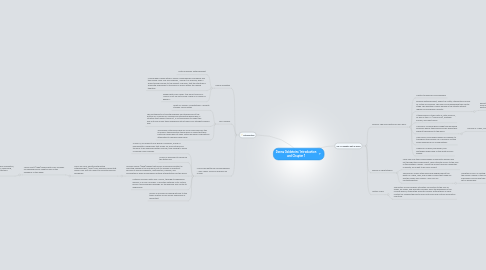
1. Introduction
1.1. Donna Goldstein
1.1.1. North American Anthropologist
1.1.2. "Having been raised within a family of homegrown comedians and their fellow New York Accomplices, I found it no surprise, when I finally turned formally to the subject of humor, that the literature is filled with references to the place of humor within the Jewish tradition."
1.1.3. Agreed with Mark Twain: "the secret source of Humor is not joy but sorrow. There is no humor in heaven."
1.2. Rio's Favelas
1.2.1. What is a favela? A shantytown—poverty stricken communities
1.2.2. The protagonists of this ethnography find themselves at the bottom of a number of complex and interacting hierarchies, a situation that makes it difficult , if not impossible to make their way out from under these oppressive structures in any straight-forward way.
1.2.3. The women introduced here are so far removed from the economic transformation taking place in Brazil that their particular favela has not been visited by global corporations attempting to harness cheap labor.
1.3. "Funny had better be sad somewhere." - Jerry Lewis: Donna's Research on Humor
1.3.1. Humor is, according to one group of scholars, a kind of homeoestatic mechanism that allows for social strains and tensions to be expressed within a group, thus leading to a kind of escape-valve analysis.
1.3.2. Humor is perceived to reinforce the status quo
1.3.3. Michael Mulkay (1988) argues that humor is basically impotent in affecting change in the real world, but its analysis is important because it reveals ambiguity, contradiction, paradox, and inconsistency while encouraging multiple interpretations of the world.
1.3.3.1. This is an ironic rebuttle with British anthropologist, (1966) Mary Douglas' beliefs that humor is an anti-rite meant to revolutionize and reorganize.
1.3.3.1.1. James Scott (1985) agreed with Mary Douglas. He believed humor might be one of the "weapons of the weak."
1.3.4. Historian Harrison Peter Gay: Humor, through its aggressive impulse, is a form of power: "Using the materials of its culture, humor offers splendid openings for the exercise and control of aggression."
1.3.5. Humor is one way of bearing witness to the tragic realities of life and an expression of discontent.
2. CH.1-Laughter out of place
2.1. Carnival: The main festival of Rio's poor.
2.1.1. Central to Brazilian consciousness
2.1.2. Brazilian anthropologist, Robert da Matta, interpreted Carnival as a ritual of inversion. The poor and marginalized take center stage. The wealthier classes parade in the streets without regard for bourgeoisie morality.
2.1.2.1. Robert Stam (1997) argues that Da matta's account falls short because it fails to theorize the political ambiguities of Carnival.
2.1.3. It takes place in other parts of Latin America., as well as the U.S. (Mardi Gras), southern Europe, and West Africa.
2.1.4. Carnival is a looking glass image through which Brazilians define themselves and by which they present themselves to the world.
2.1.4.1. Carnival is 4 days, and 5 nights.
2.1.5. Men have a much wider degree of freedom to transgress than women do. Carnival is not the same experience for all populations.
2.1.6. Makes fun of dead, sexualized, and grotesque bodies and of the death of poor bodies.
2.2. Women in shantytowns.
2.2.1. Many earn less than livable wages as domestic workers and yet, through their employment, have intimate access to the lives of the wealthier classes. *Given the almost obscene disparities of wealth, Rio ought to be more violent.
2.2.2. The women I knew often joked and laughed about the death of a child, rape, and murder in ways that made me and the reader feel uneasy. *This calls for contextualization.
2.2.2.1. Goldstein's GOAL in writing Laughter out of Place was to give the reader a sense of the context within which distinct individuals live and see their lives, limited by an intersecting set of hierarchies.
2.3. History of Rio
2.3.1. The history of Rio has been intimately connected to the lives of slaves, ex-slaves, and domestic workers since the beginning of the colonial period, making the domestic worker setting there an ideal context for viewing the practices of both class and cultural domination over time.
